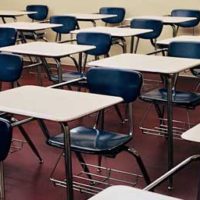NPG President Mann Releases New Forum Paper on Rising Immigration and Stress on Public Schools.
- NPG
- March 6, 2018
- Press Releases
- 0 Comments
 Your gift helps publish and distribute materials like this.
Your gift helps publish and distribute materials like this.
Download a PDF of this release here.
NPG President Mann Releases New Forum Paper on Rising Immigration and Stress on Public Schools.
Introducing NPG’s new Forum paper on immigration’s effects on the crowding, spiraling costs, and underperformance of the nation’s K-12 public schools, NPG President Don Mann called the work another reminder that stagnating educational quality is one of America’s many social and demographic challenges that would be greatly eased by a smaller U. S. population.
Mann notes that the Forum paper, The Impact of Immigrant Children on America’s Public Schools, by NPG author Christopher Daly, raises expertly the demographic and legal trends since 1980 that have tripled the foreign born population here from 14.1 million in 1980 to 43.0 million in 2016.
The higher fertility of the growing foreign born segment has in turn yielded parallel growth in the number of their school-age children. In 1980, Mann continued, just 7 percent of public school students were from immigrant households, rising to 23 percent today – markedly greater than the foreign born’s 13.6 percent share of the overall population.
The number of children of immigrants entitled to public schooling also got a boost from a 1982 Supreme Court decision (Plyler v. Doe) extending that right to illegal alien children. Mann considers this 1982 proclamation of free U.S. public education to all comers an incentive for more illegal immigration.
Mann believes diversity can be an asset when resources are adequate, but thinks that the new paper is correct in that rapid immigration since 1980 has brought to U.S. schools linguistic confusion, overcrowded class rooms, and high student-teacher ratios well above the optimum level. All of the stresses are particularly acute in metropolitan areas of heavy immigrant settlement.
Equally troubling to Mann and author Daly is that the four-decade surge in numbers has diluted educational quality for the U.S.-born and legal resident alien students as educators concentrate more on newer immigrant students. One consequence has been white and some Asian and African-American flight to suburban or private schools, leading to greater linguistic and cultural isolation of immigrants in immigration-impacted schools. In 2015, despite years of bilingual education and remedial efforts in the schools, nearly 1 in 5 students in the U.S. spoke a language other than English at home. Pew Hispanic Center studies find that the percentage of immigrants proficient in English has actually declined from a high of 57.2 percent in 1960 to 50.9 percent now.
The demands of immigration have strained public education’s existing revenue sources along with its physical infrastructure. California’s Department of Education estimated in 2014 that it would need to build the equivalent of one new school per day to cope. A previous NPG forum paper noted that an American Society of Civil Engineers 2017 report rated 45 percent of all public schools, including their temporary buildings, in “fair to poor” condition.
Mann sees little prospect of relief from these and other stresses of immigration-driven population growth, adding that even conservative Census projections now see 70 million more people will be added to the U.S. population by 2050, unless there is recognition among policy makers that the nation must transition to a much slower population growth rate, eventually leading to its gradual reduction to a sustainable level.
- EARTH DAY 2024 - April 15, 2024
- We owe it to future generations… - April 13, 2024
- New NPG Forum Paper Explores the Role of Migrant Labor in US Agriculture - April 11, 2024


